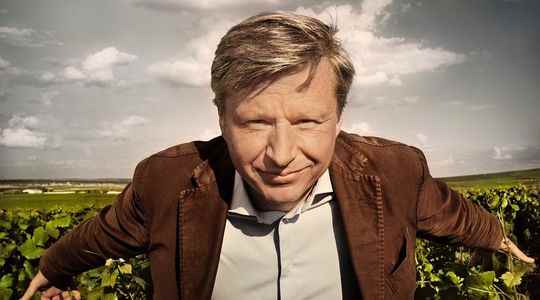L’Express: When did you start taking an interest in biodynamics?
Jean-Baptiste Lecaillon : Very early. At the beginning of my career, when I was working in Tasmania (Australia), I met Bill Mollison, one of the designers of permaculture, like Masanobu Fukuoka. I was seduced by the idea of an agriculture that respects ecosystems. When I returned to Champagne in 1994, permaculture was hardly practiced. The closest method turned out to be biodynamics, which has essentially the same objectives, but with a somewhat esoteric aspect which I do not necessarily adhere to. I went to taste the wines of Anne-Claude Leflaive, Dominique Lafon and Fleury, which I found very inspiring. These tastings convinced me to move in this direction.
However, you started cautiously…
You don’t convert a large estate like Roederer’s as quickly as a small one. I carried out my first tests, in 2000, on 11 hectares, and I’m not ashamed to say that I planted myself. I rushed headlong, thinking that it was enough to change the model. The following year turned out to be very complicated and forced me to backtrack. I then started from scratch, reforming myself with the teams and explaining to them my vision, my objectives… This also made it possible to give meaning to everyone’s work and to ensure that we found this notion of craftsmanship in search of beauty: a beautiful soil, a beautiful compost, a beautiful vine.
Twenty years later, where is the Roederer vineyard?
In Champagne, 115 hectares of our vineyard, including all of the vines involved in the production of the Cristal cuvée, are now certified organic and benefit from biodynamic practices. The same is true for Pichon-Comtesse, in Pauillac (Médoc), and for Ott, in Provence, where we have launched the conversion. Our Californian estate of Anderson is certified biodynamic. Everyone progresses at their own pace, supported by the Rouzaud family [NDLR : qui possède la maison Roederer], very attached to this movement despite the additional cost. For example, in Champagne, biodynamics translates into an increase in production costs of 15 to 20%, and an average drop in yield of 5 to 10%.
Are biodynamics practiced in the same way in all regions?
I already do not practice it uniformly from one plot to another, so imagine the differences from one region to another! You have to constantly adapt, depending on the soil, the sunshine, the pressure of diseases… This type of agriculture is easier to implement in a dry and sunny climate like that of Provence than in an oceanic climate like that of Bordeaux. Biodynamics is a toolbox from which I draw what is best suited to my needs. It must be constantly renewed, even reinvented. The living is mobile, the rules cannot be fixed.
Finally, has the taste of wines, starting with that of your champagne, changed?
Yes, the taste has changed. We have the feeling that it has amplified with, first, a greater freshness giving a more intense, longer pace; then, with a texture that leaves an impression of concentration and additional sweetness. In other words, the wines have become denser while gaining in precision and finesse.
